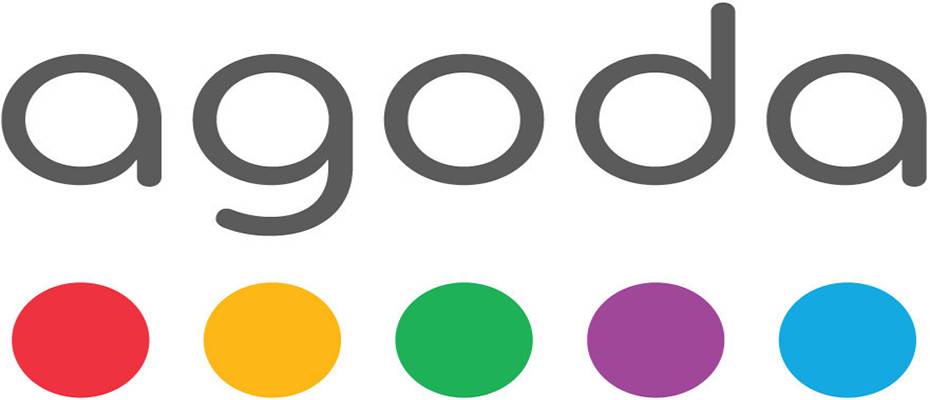Tourexpi
Over
the past 30 years, the Lufthansa Group has collected important climate-relevant
data for research on more than 35,000 regular passenger flights. Currently, up
to three aircraft take off every day in the service of atmospheric and climate
research. The next measurement flight will be Discover Airlines flight 4Y56
from Frankfurt to Orlando. The Airbus A330-300 with the registration D-AIKE is
scheduled to take off today at 4:45 p.m. (LT) and will collect climate data
continuously at an altitude of more than 10,000 meters over a distance of
around 7,600 km in about 10 hours and 45 minutes. The Lufthansa Group has been
a reliable partner for climate research since 1994. The company has
continuously expanded its commitment to climate and weather research over the
long term. The Lufthansa Group will continue to contribute to a better
understanding of the climate in the future.
Over
the last three decades, the Lufthansa Group, in collaboration with its research
partners at the Karlsruhe Institute of Technology (KIT) and the Jülich Research
Center (FZJ), has equipped passenger aircraft in its fleet with scientific
measuring instruments that collect information about the state of the
atmosphere on regular scheduled flights. With these unique measurement data,
scientists can refine existing climate models and improve weather forecasting
models.
Grazia
Vittadini, Chief Technology Officer Lufthansa Group, says:
“We
are proud to have been able to make a significant contribution to climate
research for 30 years. The further development of aviation is deeply rooted in
the DNA of the Lufthansa Group, and it is our aspiration to play a leading role
in the development of new technologies. It inspires me to see the passion and
experience with which Lufthansa Group colleagues continuously discover new ways
to advance research. Through our commitment, we are helping to sustainably
improve climate models and weather forecasts. Scientifically sound findings are
the basis for targeted measures on the path to more sustainable aviation.”
Starting
signal 30 years ago: Lufthansa's commitment to climate research
Lufthansa's
100th Airbus aircraft entering service in 1994 marked the beginning of the
company's commitment to climate research. The anniversary aircraft, an Airbus
A340-300, was equipped with a compact measurement system for the MOZAIC
research project (Measurement of Ozone, Water Vapor, Carbon Monoxide and
Nitrogen Oxides by Airbus In-Service Aircraft). Together with another converted
Airbus A340-300, Lufthansa collected measurement data for MOZAIC every day
until 2014. The measurement flights were preceded by a preparation phase of
about one year, during which the research partners installed the measuring
instruments on the aircraft together with Airbus and Lufthansa.
About
300 organizations use the data collected by the Lufthansa Group
The
Lufthansa Group has also been involved in the MOZAIC follow-up project IAGOS
(In-service Aircraft for a Global Observing System) from the very beginning.
The world's first IAGOS system has been in use since 2011 in Lufthansa's Airbus
A340-300 “Viersen”
(D-AIGT).
In 2015, the second IAGOS system was installed at Lufthansa on another Airbus
A330-300 (D-AIKO). The third IAGOS aircraft of the Lufthansa Group, also an
Airbus A330-300 (D-AIKE), has been flying for Discover Airlines since 2022.
As
a unique European research infrastructure, IAGOS, under the leadership of the
Jülich Research Center, combines the expertise of partners from research,
weather services, the aviation industry and airlines.
The
data collected daily is automatically transmitted to the central database of
the CNRS (Centre National de la Recherche Scientifique) research center in
Toulouse after each flight. It is freely and openly accessible for global
research and is currently used by around 300 organizations worldwide. They help
researchers to gain new insights into climate development and the composition
of the atmosphere, to identify long-term changes, to refine climate models and
to improve weather forecasts.
Lufthansa
Group research fleet is growing
For
the flagship project IAGOS-CARIBIC (Civil Aircraft for the regular
Investigation of the atmosphere Based on an Instrument Container), the
Lufthansa Group, together with the Karlsruhe Institute of Technology, is
currently converting the state-of-the-art Lufthansa long-haul Airbus A350-900
“D-AIXJ” (named “Erfurt”) into a flying research laboratory in a multi-year and
globally unique project.
A
measuring laboratory weighing a good two tonnes and specially developed for the
project is currently being set up. Around 20 measuring instruments will be
installed in the laboratory, which will later be installed in the cargo hold of
the “Erfurt” on selected flights and connected to the air intake system on the
outer fuselage of the aircraft via permanently installed pipes. At the end of
2025, this fully automated high-tech laboratory is scheduled to take off for
the first time and, on selected flights in Lufthansa's worldwide scheduled
operations, to measure more than 100 different trace gases, aerosol and cloud
parameters from the ground up to the tropopause region at altitudes of nine to
thirteen kilometers, in addition to passenger transportation. Between 2004 and
March 2020, the Lufthansa Airbus A340-600 “Leverkusen” (D-AIHE) had already
completed around 500 measurement flights for IAGOS-CARIBIC in the service of
climate and atmospheric research.
With
the combination of a flying measurement laboratory on the D-AIXJ and a total of
ten aircraft in the IAGOS fleet, including three from the Lufthansa Group,
IAGOS is tapping into an enormously valuable treasure trove of data for both
long-term atmospheric observations and the elucidation of important atmospheric
processes. The evaluation of the extensive measurement data has led to over 480
peer-reviewed scientific publications to date, including several articles in
the high-ranking journals of Nature and PNAS since 2015. In 2014, the flying
CARIBIC laboratory was able to make an important contribution to the detection
of three previously undetected chlorofluorocarbons (CFCs), the main
contributors to the so-called hole in the stratospheric ozone layer.
With
the measurement data collected by the Lufthansa Group and other airlines, it
has also been possible to build up a unique global database on the very
important greenhouse gases water vapour and ozone across all the projects
mentioned.
Continuous
contribution to improving weather forecasts
A
large part of the Lufthansa Group fleet is also equipped with the AMDAR system
(Aircraft Meteorological Data Relay). This records important meteorological
data measured by the aircraft, such as temperature and air pressure. These data
are used, for example, by the German Meteorological Service (DWD) for the daily
weather forecast. Since 2015, Lufthansa has also equipped nine Airbus A321
aircraft with a WVSS-II humidity sensor (Second-Generation Water Vapor Sensing
System) and provides the DWD with additional data on water vapor content in the
atmosphere, which is important for weather modeling.
Broad
research commitment to avoid long-lasting contrails
A
current research focus of the Lufthansa Group, together with partners from
science and industry, is to better understand the effects of non-CO2 emissions
from aviation and to develop countermeasures.
The
Lufthansa Group is a partner in the research project D-KULT (Demonstrator
Climate and Environmentally Friendly Air Transport), which is funded by the
German government's aviation research program and coordinated by the German
Aerospace Center (DLR). At the same time, SWISS is actively involved in the
European research project CICONIA (Climate effects reduced by Innovative
Concept of Operations - Needs and Impacts Assessment). Among other things,
these two coordinated projects are investigating how well areas with a high
tendency to form climate-impacting contrails can be predicted and how this
information can be incorporated into flight planning and air traffic
management.
In
this context, Lufthansa and Lufthansa Cargo are also participating in a test
flight program together with other industry players as part of the D-KULT
project. A prototype developed by Lufthansa Systems for climate-optimized
flight planning is also being used.
Image
Credit: © Lufthansa Group
The most interesting news
 Read the News
Read the News

Lufthansa’s First Anniversary Aircraft Touches Down in Frankfurt
Brand-new Boeing 787-9 with XXL crane livery marks the start of the airline’s 100th anniversary fleet
 Read the News
Read the News

LOT Polish Airlines Launches Direct Warsaw–Bangkok Flights
New long-haul route from October 2026 strengthens air connectivity between Central Europe and Thailand
 Read the News
Read the News

Marriott opens its 200th hotel in India with Westin Jaipur resort
Marriott International has reached a major milestone in India with the opening of The Westin Jaipur Kant Kalwar Resort & Spa, its 200th property in the country
 Read the News
Read the News

Ryanair to Immediately Appeal €256 Million Fine Imposed by Italian Competition Authority
Airline calls AGCM ruling legally flawed and cites Milan court precedent confirming consumer benefits of direct distribution
 Read the News
Read the News

Discovering Lianyungang: Where Mountains and Sea Shape a City
An urban culture initiative highlights how geography, history and everyday places define Lianyungang’s identity
 Read the News
Read the News

Abu Dhabi to host Gran Turismo World Series 2026 opener
For the first time in the Middle East, the elite sim racing championship launches its new season at Space42 Arena on 28 March 2026
 Read the News
Read the News

The Luxury Collection Debuts in Taiwan with Opening of THE AMNIS in Kaohsiung
New hotel brings destination-driven luxury storytelling to southern Taiwan
 Read the News
Read the News

Agoda Insights Highlight Business Impact of Localization Across Asia’s Tourism Boom
Advanced localization strategies drive higher guest satisfaction, repeat bookings and revenue growth
 Read the News
Read the News

Marella Cruises Launches Sale with Savings of up to £300 per Booking
New promotion covers cruise holidays from Summer 2026 through Summer 2027
 Read the News
Read the News

Delta One Check-In expands across US hubs
Premium check-in experience rolled out nationwide
 Read the News
Read the News

Vignette Collection makes African debut with Fairview Hotel Nairobi
First Vignette Collection hotel on the continent
 Read the News
Read the News

FITUR 2026 set to deepen tourism cooperation between China and Spain
Strong momentum for bilateral tourism exchange
 Read the News
Read the News

Hilton accelerates lifestyle hotel growth across Türkiye
Canopy by Hilton debuts in key cities
 Read the News
Read the News

Ryanair carries more than one million Erasmus students across Europe
Exclusive partnership with the Erasmus Student Network supports affordable travel home for the Christmas holidays
 Read the News
Read the News

TAT launches ‘Healing Journey Thailand’ as new global wellness campaign
Luxury-led storytelling initiative to debut in January 2026, featuring British artist Henry Moodie and filmed in Krabi and Trang
 Read the News
Read the News

Eurowings rolls out new Premium BIZ Seat across Germany
Second Airbus A320neo with 2×2 premium seating now flying the network – available temporarily at no extra charge
 Read the News
Read the News

Thailand named Guest Country of Honour at CITM 2025
Celebrating 50 years of Thailand–China relations





